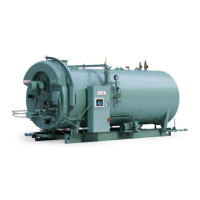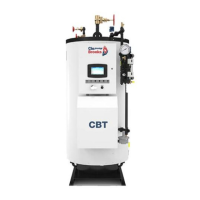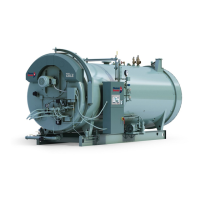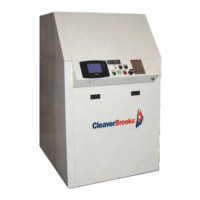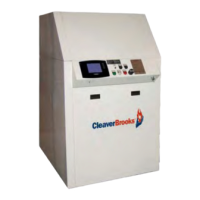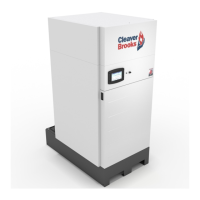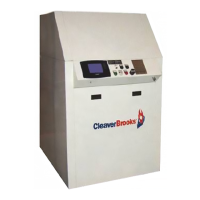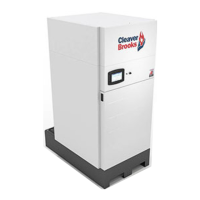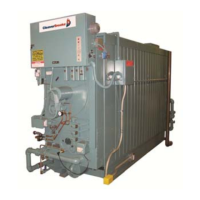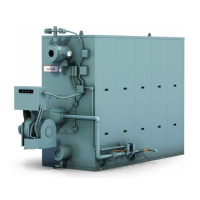750-392
CBEX-DE
3-7
Gas Pilot Flame Adjustment
The adjustment screw of the atomizing air proving switch can then be adjusted until it breaks the circuit. Here,
the programmer will lock out and must be manually reset before it can be restarted. Turn the adjusting screw up
a half turn or so to remake the circuit.
After making the adjustment, recycle the control to be sure that normal operation is obtained. Return the Run/
Test switch must be set to the “Run” position.
3.7 — Gas Pilot Flame Adjustment
The pilot has a partially premixed air and gas supply. The fuel and air are mixed through a venturi located on the
back plate damper assembly. The pilot air is supplied from the burner's combustion air routed through a tap
upstream of the damper on the backplate that bypasses the damper assembly.
The size of the gas pilot flame is regulated by adjusting the gas flow through the pilot gas regulator. The flame
must be sufficient to ignite the main flame and to be seen by the flame detector. But an extremely large flame is
not required. An overly rich flame can cause sooting or carbon buildup on the flame detector. Too small a flame
can cause ignition problems.
Although it is possible to visibly adjust the size of the pilot flame, it is preferable to obtain a micro amp or voltage
reading of the flame signal.
The correct voltage or micro amp readings can be found in the information supplied with the flame safeguard
system.
The program relay used may be of the type that provides message information that includes a constant flame sig-
nal of DC voltage. In this case a separate DC voltmeter is not required.
To measure and adjust the pilot:
1. When making a pilot adjustment, turn the manual-automatic switch to “manual”. Open the pilot shutoff cock.
The main gas cock should remain closed.
The regulator in the pilot line is to reduce the gas pressure to suit the pilot’s requirement of between 5” to 10”
WC.
2. Connect the DC voltmeter to the flame current test jacks located on the flame safeguard.
3. Turn the burner switch on. Let the burner go through the normal pre-purge cycle. When the ignition trial
period is signaled, set the Run/Test switch on the flame safeguard to the “Test” position to stop the sequence.
4. If the pilot flame is not established within 10 seconds, turn off the burner switch. Repeat the lighting attempt.
5. When the pilot flame is established, remove the flame detector from the burner plate. The pilot flame can then
be observed through this opening.
NOTE: On an initial starting attempt, portions of the fuel lines may be empty and require “bleeding” time. It is better
to accomplish this with repeated short lighting trial periods with intervening purge periods than to risk prolonged fuel
introduction. If the pilot does not light after several attempts, check all components of the pilot system.
